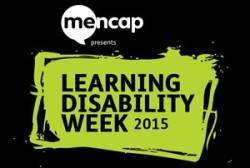Attitudes to learning disability and how children's books can help
Published on: 14 Mehefin 2015 Author: Alex Strick
This week (15-21 June) is Learning Disability Awareness Week. Book Trust Consultant Alexandra Strick looks at discrimination, language and the importance of supporting positive attitudes through books.

Around 1.5 million people in the UK have a learning disability, and this includes over 350,000 children.
What is a learning disability?
'Learning disability' as a concept is confusing and often misunderstood. It's actually an umbrella term representing a vast spectrum, including specific conditions such as Down Syndrome (and other less well-known syndromes) but also many other forms of learning disability - often without a name or known cause. The words mild, severe and profound are often used to describe it.
You may also hear terms like 'developmental disorder' or 'learning difficulty' as well as 'intellectual disability' (used in the USA) and out of date terms which are no longer acceptable such as 'mental handicap'. To fully understand the different terms and the reality for those who experience learning disability, it's well worth reading up on the subject - and there are some links below.
I want to focus this blog on attitudes to learning disability and how children's books can help.
'Almost nine in 10 learning disabled children are bullied'
Back in 2007, Mencap published a report revealing shocking levels of bullying and stigmatisation. The charity found that 82 per cent of children with learning disabilities were bullied and 79 per cent were scared to go out because they were frightened of possible bullying.
The figures showed a worrying increase on previous statistics. They also showed that 58 per cent of the children had been physically hurt by bullies. The bullying was often long-term and 36 per cent said it did not stop when they told someone.
'Adults normalise bullying behaviour through "Disablist" language'
Last year, a new piece of research from the Anti-Bullying Alliance suggested that as adults we are perpetuating and normalising bullying behaviour by using discriminatory language.
The findings showed that four in 10 adults (44%) were comfortable to use the words 'spaz', 'spastic', 'retard' or 'mong' in everyday conversation, with it often seen as being just a part of normal 'banter'.
Worryingly, if not surprisingly, the research suggested that children have also adopted this casual use of bullying language: 70 per cent of teachers consulted in the survey heard their pupils using the words 'spaz', 'spastic', 'retard' or 'mong' at school. Half of those used it in casual conversation, while the same number used it to insult their peers.
Over half of adults (53%) said that it was always offensive to use these words. However, nearly one third (30%) said that they don't consider these words to be offensive if used in 'banter'.
Origins of disablist language
Part of the problem is that most adults are ignorant of the meaning of offensive and bullying language. When asked if they knew what such words really meant and their origins, over half of adults surveyed in the 2014 research didn't know the history of the word 'mong'; over one third didn't know where the word 'spastic' came from; and one quarter were unaware of the origins of 'retard'. However, a surprising number of adults surveyed also said they would continue to use the terms, despite the negative origins.
What does all this have to do with children's books, you might ask?
The answer is 'plenty' - particularly when you take a look at how many teen and young adult books regularly use disablist language. The argument often is that such books are just reflecting 'real' life and 'teen speak'.
However, the fact remains that the use of words like these, whether casually or as a direct insult, can have an extremely damaging effect on disabled children. We are potentially impacting negatively on their self-esteem, their sense of self, their educational development, their mental health and their social relationships. Plus, we are surely perpetuating the idea that it's somehow acceptable to use such derogatory terms, whether casually or as direct insults. Is this not an indirect form of bullying?
Images of learning disability in children's books
And meanwhile, the positive images and experiences of people with learning disability remain largely invisible in children's books. Incredibly few books feature learning disabled characters and those that do tend to use it as a major issue or theme, with the learning disability representing a primary character trait.
Although it's important that children's books acknowledge the challenges faced by people with learning disabilities, it would also be refreshing to see a few books which include learning disability in a natural, casual and positive way.
We also need books to recognize the spectrum of different types and degrees of learning disability.
Thankfully, in just the last few weeks I've recently heard from an aspiring writer (the father of a learning disabled daughter) who is planning a book which happens to include a disabled member of the family and an independently published book about a learning disabled fairy.
However, we surely need more. Many many more. And in the meantime, let's try to start eliminating the lazy use of discriminatory and disablist language in the books we offer children and young people.
Topics: Bookmark, Disability, Features






Add a comment